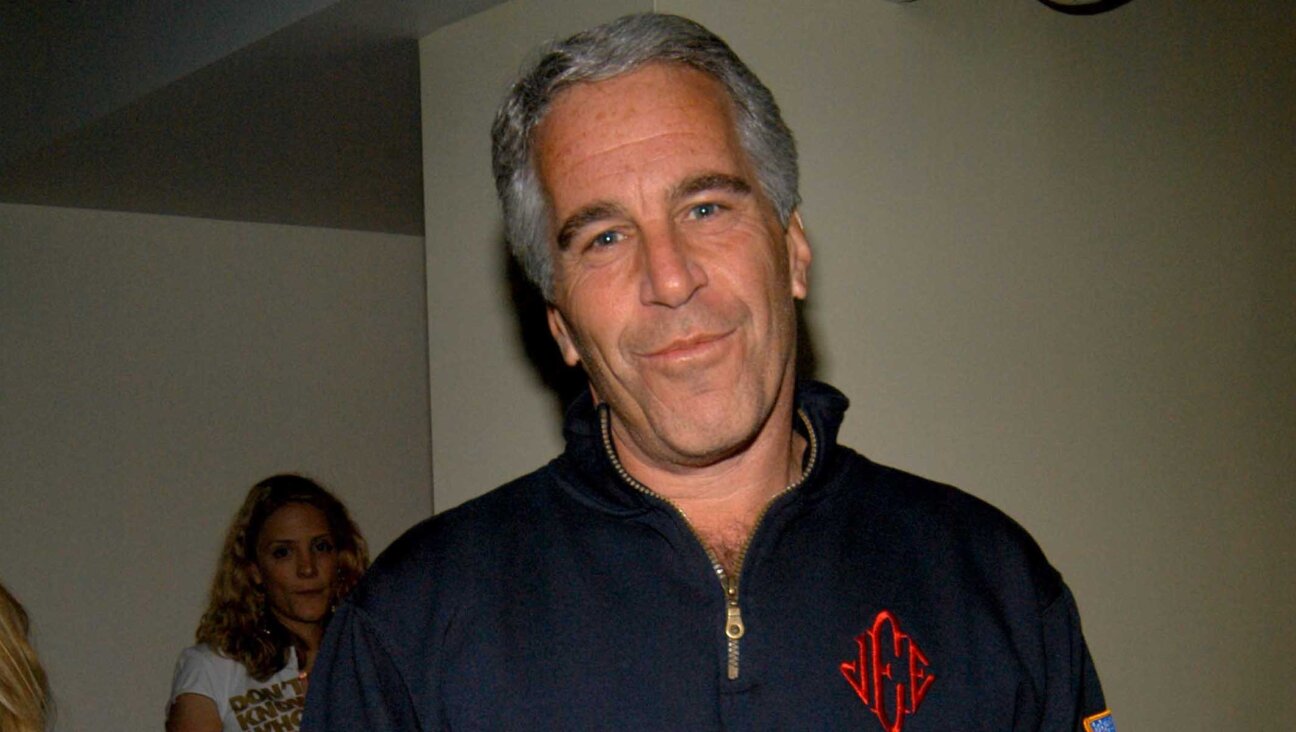5 Reasons Benjamin Netanyahu Is Struggling To Build a Coalition

Image by getty images
On March 17, Israeli Prime Minister Benjamin Netanyahu won a landslide. His 30 Knesset seats were the largest tally for a single party in 13 years, and six more than his nearest opponent.
(JTA) And his path to a coalition was clear: partner with the haredim, reconnect with three right-wing or center-right parties — all led by former Likudniks — and voila! Sixty-seven out of the Knesset’s 120 seats.
So, what’s taking so long? Here are the five reasons Israel’s coalition talks have gone down to the wire.
Israel has infamously fragmented politics.
This isn’t the two-party U.S., or even the U.K, where four major parties are vying for parliament. Ten factions made it into the new Knesset, and that’s after legislation raising the vote threshhold parties had to pass.
So even though Netanyahu’s Likud now holds a quarter of the Knesset’s seats, he still needs to partner with at least four more parties to form a rightist-religious coalition of his so-called “natural partners.” Those parties each negotiate coalition deals with Likud separately, a secretive and — in this case — drawn-out process. It also means…
Small parties can extort Likud for concessions.
Netanyahu wanted to partner with five parties: the center-right, fiscally-focused Kulanu, the religious Zionist Jewish Home, the nationalist Israel Beiteinu and the haredi parties — United Torah Judaism and Shas.
Netanyahu said he wanted those parties when he called elections, and they hadn’t forgotten. So when Netanyahu pursued, his would-be partners played hard to get.
The haredi parties wanted a rollback of recently-passed religious reforms. Israel Beiteinu wanted to control the Defense Ministry, Jewish Home the Foreign Ministry, Kulanu the Finance Ministry.
That’s why it took Netanyahu more than a month to sign his first coalition agreement. Never mind that each of those parties are a fraction of Likud’s size; because Likud needs them, their power grows.
But Likud can exile small parties to the opposition.
The rightist-religious parties were Netanyahu’s first choice, but they weren’t his only choice. The prime minister could have opted for a unity government with the center-left Zionist Union, which came in second with 24 seats.
Sure, the hawkish, free-market Netanyahu would have had to find middle ground with a party that has socialist roots and supports a Palestinian state. But a 54-seat bloc would have been nearly unassailable, allowing the two parties their pick of haredi or centrist junior partners.
So if the small parties got tough in coalition talks, Netanyahu could always threaten to go the other way. That would have stuck those parties in the opposition, which is where some political careers go to die. Kadima, the now-defunct centrist party, won 28 seats in the 2009 election but sat in the opposition. Four years later, it squeaked into Knesset with just two seats, its final gasp.
But some parties prefer the opposition. Israel Beiteinu, the nationalist party founded to focus on Russian immigrant concerns, withdrew from coalition talks on Monday, two days before the final deadline. Party Chairman Avigdor Liberman gave up another term as foreign minister because he believed being a protest voice served his party better than another stint under Netanyahu.
It’s not just business; it’s personal.
Turns out that nine total years in office can make you a few enemies. Netanyahu had bad blood with every party, or party leader, he wanted to sign.
Shas and United Torah Judaism felt betrayed when Netanyahu left them in the opposition in 2013, breaking a longstanding bond between Likud and the haredim. Jewish Home Chairman Naftali Bennett, hired as Netanyahu’s chief of staff in 2006, was reportedly fired in 2008 because he clashed with Netanyahu’s wife. Liberman and Netanyahu merged Knesset slates in the last election, but then Liberman broke away at the beginning of last summer’s Gaza war, criticizing Netanyahu for being soft. And Moshe Kahlon, head of Kulanu, left Likud in 2012, later criticizing it for abandoning lower-income Israelis under Netanyahu.
It’s hard to know how much of the personal animosity came up in the closed-door meetings. But it can’t have made the process any easier.
Even when it’s over, it’s not really over.
As of this writing, Netanyahu looks poised to form a narrow, 61-seat majority coalition with Kulanu, Jewish Home, Shas and United Torah Judaism. He conceded the religious reforms to the haredim, he made Kahlon finance minister, and he’s likely to give the education and justice ministries to Jewish Home.
But the saga rarely ends when the coalition forms. Coalitions frequently fluctuate — with one party leaving or another joining — or they fall apart, prompting early elections. 2011 saw Labor split in two, with five members remaining in Netanyahu’s coalition and eight others leaving. In 2012, Kadima joined the coalition and then, weeks later, left. 2014 saw a fragile center-right coalition crumble just one year and eight months into its term, leading to the March election.
So no matter what happens today, sit tight. We’re in for a ride.
- Israel has infamously fragmented politics.
This isn’t the two-party U.S., or even the U.K, where four major parties are vying for parliament. Ten factions made it into the new Knesset, and that’s after legislation raising the vote threshhold parties had to pass.
So even though Netanyahu’s Likud now holds a quarter of the Knesset’s seats, he still needs to partner with at least four more parties to form a rightist-religious coalition of his so-called “natural partners.” Those parties each negotiate coalition deals with Likud separately, a secretive and — in this case — drawn-out process. It also means…
- Small parties can extort Likud for concessions.
Netanyahu wanted to partner with five parties: the center-right, fiscally-focused Kulanu, the religious Zionist Jewish Home, the nationalist Israel Beiteinu and the haredi parties — United Torah Judaism and Shas.
Netanyahu said he wanted those parties when he called elections, and they hadn’t forgotten. So when Netanyahu pursued, his would-be partners played hard to get.
The haredi parties wanted a rollback of recently-passed religious reforms. Israel Beiteinu wanted to control the Defense Ministry, Jewish Home the Foreign Ministry, Kulanu the Finance Ministry.
That’s why it took Netanyahu more than a month to sign his first coalition agreement. Never mind that each of those parties are a fraction of Likud’s size; because Likud needs them, their power grows.
- But Likud can exile small parties to the opposition.
The rightist-religious parties were Netanyahu’s first choice, but they weren’t his only choice. The prime minister could have opted for a unity government with the center-left Zionist Union, which came in second with 24 seats.
Sure, the hawkish, free-market Netanyahu would have had to find middle ground with a party that has socialist roots and supports a Palestinian state. But a 54-seat bloc would have been nearly unassailable, allowing the two parties their pick of haredi or centrist junior partners.
So if the small parties got tough in coalition talks, Netanyahu could always threaten to go the other way. That would have stuck those parties in the opposition, which is where some political careers go to die. Kadima, the now-defunct centrist party, won 28 seats in the 2009 election but sat in the opposition. Four years later, it squeaked into Knesset with just two seats, its final gasp.
But some parties prefer the opposition. Israel Beiteinu, the nationalist party founded to focus on Russian immigrant concerns, withdrew from coalition talks on Monday, two days before the final deadline. Party Chairman Avigdor Liberman gave up another term as foreign minister because he believed being a protest voice served his party better than another stint under Netanyahu.
- It’s not just business; it’s personal. Turns out that nine total years in office can make you a few enemies. Netanyahu had bad blood with every party, or party leader, he wanted to sign.
Shas and United Torah Judaism felt betrayed when Netanyahu left them in the opposition in 2013, breaking a longstanding bond between Likud and the haredim. Jewish Home Chairman Naftali Bennett, hired as Netanyahu’s chief of staff in 2006, was reportedly fired in 2008 because he clashed with Netanyahu’s wife. Liberman and Netanyahu merged Knesset slates in the last election, but then Liberman broke away at the beginning of last summer’s Gaza war, criticizing Netanyahu for being soft. And Moshe Kahlon, head of Kulanu, left Likud in 2012, later criticizing it for abandoning lower-income Israelis under Netanyahu.
It’s hard to know how much of the personal animosity came up in the closed-door meetings. But it can’t have made the process any easier.
- Even when it’s over, it’s not really over.
As of this writing, Netanyahu looks poised to form a narrow, 61-seat majority coalition with Kulanu, Jewish Home, Shas and United Torah Judaism. He conceded the religious reforms to the haredim, he made Kahlon finance minister, and he’s likely to give the education and justice ministries to Jewish Home.
But the saga rarely ends when the coalition forms. Coalitions frequently fluctuate — with one party leaving or another joining — or they fall apart, prompting early elections. 2011 saw Labor split in two, with five members remaining in Netanyahu’s coalition and eight others leaving. In 2012, Kadima joined the coalition and then, weeks later, left. 2014 saw a fragile center-right coalition crumble just one year and eight months into its term, leading to the March election.
So no matter what happens today, sit tight. We’re in for a ride.




















